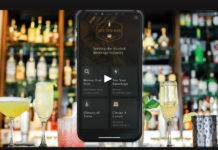The most effective way to improve the efficiency of your business is to control the amount of product needed to fuel its operation. A modest and relatively simple effort to control portion can result in significant savings and consistent and predictable costs and profit margins.
INCREMENTAL IMPROVEMENT IN YOUR BAR
To a bar owner or operator dealing with tens or hundreds of thousands of dollars on a weekly, monthly, or annual basis, a couple of cents here and there make not seem like much. Think again—pennies make dollars.
Let’s say, for sake of simplicity, that you gross $500,000 from your bar operation and have a cost-of-goods-sold on those sales of $200,000, leaving a gross profit of $300,000. A 7% improvement on that cost-of-goods-sold figure would result in a reduction of $14,000, or a corresponding improvement of around 3% on the bottom line.
If your standard operating procedure calls for pouring a two-ounce shot into your cocktails, the numbers above represent an over pour of just 14/100 of an ounce. If your bartenders over pour a quarter-ounce, the impact on the bottom line in the example above increases to $25,000, or about 5%; if they over pour by a half-ounce, the impact on the bottom line is $50,000, or about 10%.
Like I said, pennies make dollars. These seemingly small fluctuations in portion don’t just impact the bottom line. They can have a negative impact on your annual budget, which as we all know is a vital tool for making decisions about the coming year. One of the most important assumptions you make when establishing an annual budget is a good and reliable prediction of cost of goods sold. That prediction is based on product cost and portion size, adjusted by you, based on the sales mix and past experience. Product cost and the sales mix may vary, but the one variable you should have complete control over is portion. When you don’t, your plan for the coming year becomes useless.
Fortunately, there are some traditional methods to help control portion as well as some tools and systems on the market that make it relatively simple to do so. Owners and operators need to carefully consider their needs and resources before selecting one or a combination of these alternatives.
LOW-TECH SOLUTIONS
Portion Control Pourers include a ball bearing that stops the flow of spirit once the appropriate amount has been dispensed. They are as or more effective than measuring via a jigger, while providing the added benefit of allowing the customer to see their spirit being poured and their drink built in a more professional way.
Magnuson Industries (www.posi-pour.com) makes the Posi-Pour 2000, and was first to manufacture and patent this technology. These portion control pourers are relatively inexpensive and are easy to maintain, requiring rinsing once per week. Over 35 million Posi-Pours have been sold worldwide.
“Bar owners can reduce inventory costs by as much as 30% when they change from ‘free pouring’ to using the Posi-Pour, simply because spillage, waste, and over pouring are eliminated,” says Bob Gough, Director of Sales at Magnuson Industries. “With no change in sales volume, overall profits are increased because liquor costs are reduced.”
“The Posi-Pour relies on air and gravity to operate—no electronics, no software, no complicated maintenance,” says Gough. “It’s simple to use, and reduces training time for new staff significantly. It is the only patented portion control pour spout on the market—no copies, foreign or domestic, have improved the technology.”
The latest expansion of the Posi-Pour line has been the addition of several “cork” sizes to accommodate the tremendous variety of bottle sizes used by today’s distillers. This allows the tavern owner to have the same spout color and portion size on every bottle behind the bar—even the hard to fit tequilas so popular today.
Pour Racks are an equally effective solution, but only, I think, for certain types of operations. These units, like the Rack and Pour System manufactured by Precision Pour (www.precisionpours.com) store spirit bottles upside down and dispense them by gravity, in controlled amounts. They are simple, convenient, and can serve spirits in customizable quantities. Rotary and counter mount units sit on the back bar and wall-mount units are also available.
These products accomplish a couple of things: they are effective at controlling portion, they are easily maintained, and they do allow the customer to see the bottle from which their chosen spirit is dispensed. They are, however, sometimes considered less aesthetic, and not always appropriate for higher-end operations. But they are perfect for pubs and taverns.
HIGH-TECH SOLUTIONS
There are a number of systems currently on the market that employ sophisticated technology to solve the portion control problem. All use sensors in the pourer to identify the spirit being dispensed, and all use software to record which spirit has been dispensed and in what quantity. Most all of these systems can be set to serve a pre-determined, controlled portion of spirit.
With liquor dispensing guns bottles are stored somewhere other than at the bar, typically in a sub-level. Spirits are dispensed much like soda, with the spirit flowing through a tube to the gun. The portion can be controlled and that portion can be recorded as having been removed from inventory. The systems can also be attached to POS systems ensuring accurate pricing of cocktails.
These systems are terrific in many respects, in that they deal with the important issues of portion control as well as providing exact data on sales by spirit, cost and sales, and inventory. However, like jiggers, they are really most appropriately used at service bars where drinks are made away from guest sight. They are a bit industrial, and again, like jiggers, limit the bartender’s ability to demonstrate his craft.
Hard-wired Liquor Dispensing Systems. From a guest experience perspective, liquor control systems that use a ring are better than systems that employ a gun. They feature all of the functions performed by systems that employ guns, but with the added benefit of allowing the guest to see their spirit of choice being used to make their cocktail of choice. They also make it possible for the bartender to fully demonstrate his abilities.
These systems employ a ring located at each pour station. Each spirit contains a coded pourer. That coded pourer is slipped up through the ring and all functions, including portion control, costing and pricing, and inventory are performed by the respective operating system. These systems are terrific in nearly all respects. Their main drawback, and perhaps their only drawback, is that they require the bartender to perform all of his work in an area in close proximity to the ring.
From a guest experience perspective and from the perspective of the bartender, perhaps the best solution on the market is a wireless dispensing system like that produced by Wircon (www.wirconusa.com). These allow the guest to see the ingredients being used to create their cocktail and they allow the bartender the freedom to make drinks at the most convenient spot at the bar. This is possible because each pour spout passes data about a specific spirit and quantity to a wireless receiver, which then communicates that data to the operating software. In the case of the Wircon System, work need only be done within 1,000 feet of the receiver. This is a particularly good solution for those operations that employ portable bars for functions, or at especially busy times.
Brian J. Warrener is an Associate Professor at the Hospitality College of Johnson & Wales University, in Providence, Rhode Island.
To read the full article “Portions out of Control?”, click here to view the July/August 2009 issue of Bar Business Magazine








